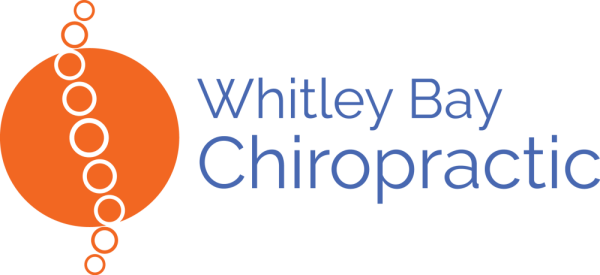Tennis Elbow: Myofascial Release, Mulligan’s MWM and Isometrics
Health care providers who use therapy and prescribe exercise, like Manual Therapy UK for more original content, and information on my workshops!
Tennis elbow, or lateral epicondylalgia (LE), can be a challenging condition to treat. In this post, I am writing to inform healthcare providers about a combined approach of soft tissue work and exercise to treat LE. I will cover how the pendulum has swung on the inflammation debate, what happens at the cellular level, and the research on interventions.
The inflammation debate and the cellular level
Over the last few decades, LE stopped being considered a tendinitis because little evidence of inflammatory markers were found. Tendinopathy became the new term of choice, but recent research has found convincing evidence that the inflammatory response is a key component of chronic tendinopathies like LE.
When LE is present changes occur to the collagen, fibroblasts, tenocytes, and vascularity. While some inflammatory cells are found in and around the tendon. In a nutshell, tendinosis involves too much tendon breakdown and not enough repair. When repetitive micro trauma damages cells, they create new collagen which is structurally different.
It is probably wise in some cases of LE to try to reduce inflammation, as well as manual therapy and exercises.
MRI, ultrasonography, and pain-free controls
Even gray-scale ultrasonography may not be specific enough for LE cases. MRI evidence of thickening or partial tearing (not just oedema) of the tendon, is required to safely establish the diagnosis of tennis elbow.
A 2014 study investigating the use of diagnostic ultrasound for LE stated, “the high prevalence of tendinopathic changes in pain-free controls challenges the specificity of the measure”. While a 2014 review concluded, “power doppler ultasonography and real-time sonoelastography (is) expensive, and …this technology did not significantly add to the sensitivity and specificity of Gray-scale Ultrasonography”.
There is evidence of MRI signs of oedema on the asymptomatic side of many LE patients. Thickening or partial tearing was not found on the asymptomatic side.
Exercises:
Isometrics before eccentrics It may be wise to start with isometric exercises before progressing to eccentric exercises. Isometric exercises should be done at ~3 different joint angles of MCP, PIP, and DIP joint flexion for the extensor digitorum, and ~3 different angles of wrist flexion / extension and adduction / abduction for the extensor carpi radialis.
Eccentric exercises with a band for LE are often helpful and easy to learn, and there is some positive research about the FlexBar®.
Research on interventions
Most LE studies comparing interventions have not evaluated long-term outcomes, but is that a strong indictment? It could be argued that short and medium-term results are more important when you consider a 2002 RCT found 83% cases of LE resolved at 52 weeks with no intervention. If 83% resolve in one year, are long-term follow-ups questionable in value?Long-term studies may be too dependent on uncontrollable variables like: strengthening exercise program adherence, biomechanical changes, the amount of rest and adherence to preventative work practices, to name a few.
A recent review of RCTs compared injections (corticosteroid, platelet-rich plasma, autologous blood, sodium hyaluronate, or glycosaminoglycan polysulfate), physiotherapy, shock wave therapy, laser, ultrasound, corticosteroid iontophoresis, topical glyceryl trinitrate, or oral naproxen with either observation only or placebo at followup of at least 6 months. No intermediate- to long-term clinical benefit was found due to the interventions.
Active Release Techniques (ART) and Myofascial Release have been evaluated in 1 2 RCTs and 1 2 case reports recently. The RCTs above reinforce the use of long duration holds of either release technique, especially when treating tendons and musculotendinous junctions. (A recent RCT found myofascial release effective in treating plantar fasciitis, which is a similar enthesopathy.) Anecdotally, I have found a focus treating the wrist extensors over the head of the radius to be important as well as the supinator.
Mulligan’s Mobilization with Movement (MWM) combines the use of active motion and passive manual mobilization which involves repeated gripping and sustained lateral glide to the elbow for 5 to 10 seconds. MWM for treating LE has been extensively researched 1 2 3 4, and impressive reductions in pain were found in the short to medium-term.
Corticosteroid injections were found to provide worse outcomes than a placebo in a LE 2013 RCT. (A recent study found steroid injections were helpful in Achilles tendinopathy.) “There may be a short-term pain relief advantage found with the application of corticosteroids, but no demonstrable long-term pain relief” – 2014 review.
Exercises helped relieve pain in the short-term compared to no intervention 2011 RCT.
Central sensitization– Bilateral cervical dysfunction has been found in cases of unilateral LE. Demonstrating a possible central sensitization mechanism in cases of tendinosis. A 2014 review stated, “Sensory and motor deficits exist on the non-injured side of patients with unilateral tendon pain and disability–implications for central nervous system involvement.” Not surprisingly, manipulative therapy directed at the cervical spine was found to be effective in the short to medium-term.
Cyriax therapy was less effective than supervised exercise – 2012 RCT.
Acupuncture was found to be more effective than a sham – 2014 review.
Conclusion
There is plenty of good evidence that manual therapy and specific exercises are effective in treating tennis elbow. Learning the techniques above gives you the skills to get good results on a difficult condition.
Manual Therapy UK – For more content like this and workshop details
Articles I wrote or contributed to
Telegraph The ART of Active Release Techniques for Injuries
STACK New Age of Golf Training is Creating Stronger and More Athletic Golfers
Athletics Weekly Performance Therapy for Greg Rutherford
220 Triathlon ART- How is it different from sports massage
Vigour Magazine Release tight muscles to improve performance
Progenex ART for CrossFitters
FIT Institute Research based hamstring therapies
TPI What Performance Therapy Looks Like For Top Golfers
Podcasts on ART
